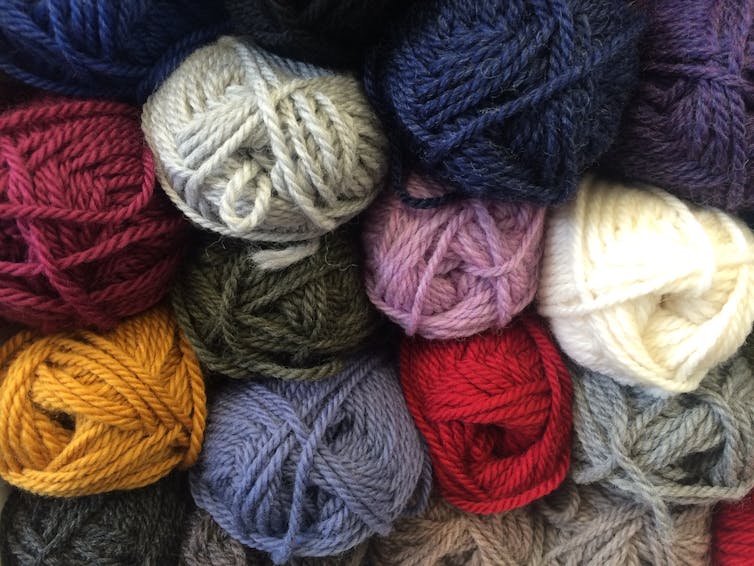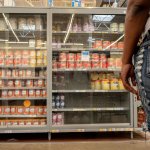Shutterstock
Throughout the coronavirus pandemic, we have found ourselves in the middle of a nostalgia frenzy. It seemed to permeate everything: nostalgia playlists on music streaming platforms outperformed new music, and old albums by Madonna, Janet Jackson and Mariah Carey topped the iTunes charts. On TV, we’ve been treated to memorable football matches, Wimbledon finals and favourite dramas as broadcasters played their part in providing comfort television.
Most notably perhaps, has been the huge surge in nostalgic hobbies such as knitting, crochet and DIY fashion, an ongoing obsession with baking bread and lots of community singing on Zoom. These “nostalgic consumption” practices tapped into a collective sense of uncertainty and anxiety. By indulging in nostalgia, the past seemed a safe harbour – and far more reassuring than the present or future.

Author provided
The problem and the solution
Consumption has become a dominant human practice. As the key driving force of every market economy, it is often regarded as both the problem and solution for crises. In this pandemic, certain kinds of consumption were restricted as a means to keep people safe, as we saw with lockdown.
All but essential shops were ordered to close, as were bars, restaurants, gyms, sporting events, not to mention schools and many workplaces. And of course leisure travel was mostly forbidden. As things ease, governments are keen to encourage people to start spending again to help stimulate the economy.
Similarly, in the face of climate crisis, more sustainable consumption is crucial if countries are to reduce carbon emissions. As consumption becomes the main vehicle for navigating a crisis, both consumers and brands can turn to the past not just to escape, but also as a way of managing the present and creating the future.
Nostalgic consumption is far more than simply being about the past. Our research highlights that nostalgia can be progressive and forward looking, that it doesn’t have to be about being stuck in the past, but can instead be about leveraging the past to create a better present and future. As researchers, we want to update the popular understanding of nostalgia by adding these dimensions of present and future.
Now, as countries begin to open up, there is ongoing debate about whether we will resume our old ways of consuming – with all the consequences this might have for the economy. Will we see a boom in native tourism for example, while other established sectors such as conferences and large-scale live entertainment collapse? Should we even be striving to get “back to normal” given we are in the middle of a climate change crisis that demands more responsible and sustainable consumption?
It’s difficult to predict what consumption will look like in the future. Reflecting on the way we have been consuming over the last few months might be useful. While coronavirus imposed restrictions on consumption, it also led to self-reflection and the realisation that contrary to common market economy doctrine, consumption is not the key to happiness.
Back to the future?
Nostalgia often becomes more prevalent and appealing in times of crisis. Originally meaning “a longing for home”, it’s come to mean a longing for a past that was good but has now been left behind.
Our recent nostalgic yearnings are more complex than they might appear because it’s not merely the past that people are longing for. With coronavirus new forms of nostalgia have emerged, namely a longing for a past that held the prospect of a future – a yearning for old spaces and the freedom to roam and travel wherever we wished.
A more peculiar form of nostalgia is the longing for how things were just before coronavirus turned our lives upside down. This challenges a basic assumption of nostalgia research: that nostalgia is a longing for a past that can no longer be recovered.
Throughout lockdown many were nostalgic not for how things were in the 1990s, or when they were little, but for how things were just a few months ago. People yearned for the pub, hugs, a day at the office and other mundane things, despite the fact there was always the prospect of doing so once the pandemic had passed.
But coronavirus has made simple things like holiday plans, going clubbing or shopping seem more challenging. What we are really witnessing is a nostalgia for a past that held the promise of a future.
Despite the comfort of reconnecting with the past, nostalgia can disguise a variety of challenges. There is a risk of reproducing the negative parts of the past, such as outdated gender roles. This was exemplified in lockdown with women devoting a larger share of their time to homeschooling, thereby sacrificing their own career ambitions. Some sociologists are already pointing out that this could set women back at least three decades in terms of equality.
The same could apply to environmental progress. Now more people will be reverting to cars to avoid using public transport, and many have increased their use of single-use plastic for takeaways instead of eating out.
But this crisis could also serve as time for reflection. Does our current economic and social system allow for a sustainable future? While this pandemic has had – and continues to have – devastating consequences for the more vulnerable parts of society, others have found themselves enjoying the peace and slower pace of lockdown, focusing on what is really important in their lives.
This could mean finding pleasure in more simple, healthy and sustainable consumption – reading, gardening, crafting, hiking and getting out into nature. The challenge ahead will be to strive for the best of both worlds – to learn from the past so we can build a better future.
![]()
The authors do not work for, consult, own shares in or receive funding from any company or organisation that would benefit from this article, and have disclosed no relevant affiliations beyond their academic appointment.











